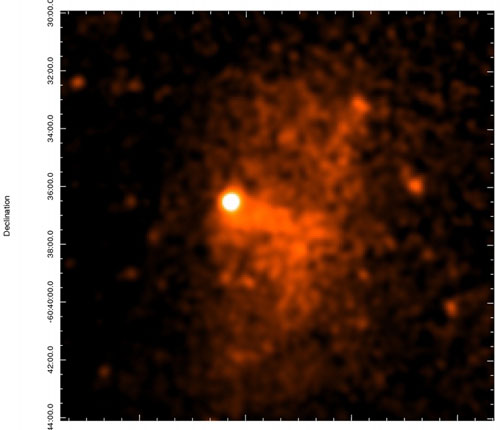 The catalogues of celestial objects contain a galaxy cluster called 'Abell 4067'. Recent observations with the XMM-Newton space observatory, however, reveal evidence that this object actually constitutes of the merger of two clusters. The smaller system appears to be losing the greater part of its gas.
The catalogues of celestial objects contain a galaxy cluster called 'Abell 4067'. Recent observations with the XMM-Newton space observatory, however, reveal evidence that this object actually constitutes of the merger of two clusters. The smaller system appears to be losing the greater part of its gas.
Jan 16th, 2015
Read more
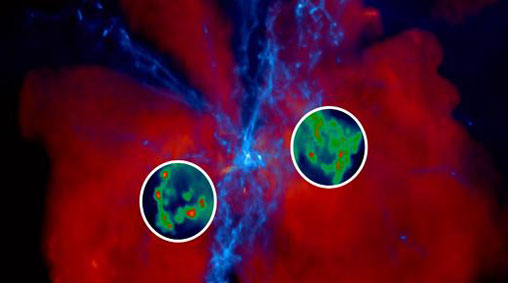 Astronomers have looked back nearly 13 billion years, when the Universe was less than 10 percent its present age, to determine how quasars - extremely luminous objects powered by supermassive black holes with the mass of a billion suns - regulate the formation of stars and the build-up of the most massive galaxies.
Astronomers have looked back nearly 13 billion years, when the Universe was less than 10 percent its present age, to determine how quasars - extremely luminous objects powered by supermassive black holes with the mass of a billion suns - regulate the formation of stars and the build-up of the most massive galaxies.
Jan 16th, 2015
Read more
A study by astrophysicists at the University of Toronto suggests that exoplanets are more likely to have liquid water and be more habitable than we thought.
Jan 15th, 2015
Read more
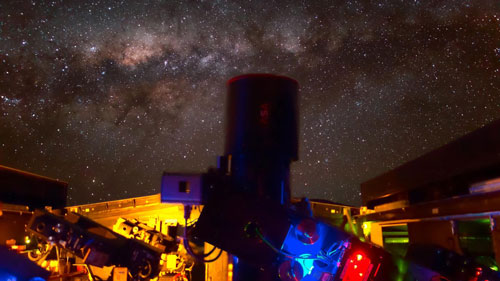 The Next-Generation Transit Survey (NGTS) telescope at the Paranal Observatory, operated by the European Southern Observatory (ESO) in the Atacama Desert in northern Chile, has achieved 'first light'.
The Next-Generation Transit Survey (NGTS) telescope at the Paranal Observatory, operated by the European Southern Observatory (ESO) in the Atacama Desert in northern Chile, has achieved 'first light'.
Jan 15th, 2015
Read more
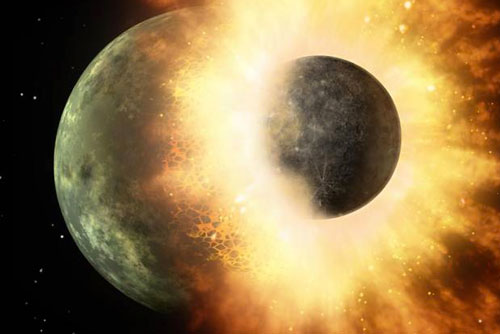 New study finds meteorites were byproducts of planetary formation, not building blocks.
New study finds meteorites were byproducts of planetary formation, not building blocks.
Jan 14th, 2015
Read more
University of Warwick scientists have begun searching for planets after the unveiling of twelve robotically controlled telescopes.
Jan 14th, 2015
Read more
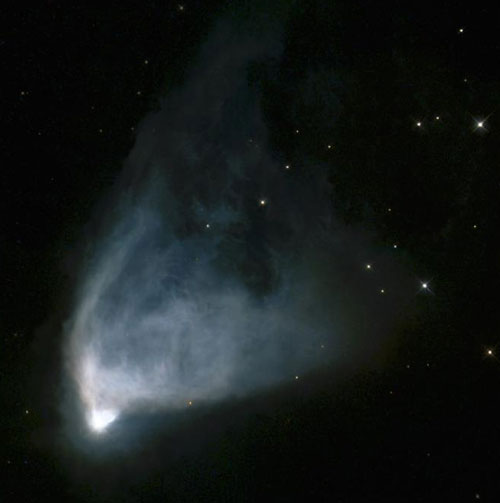 If you sweep a laser pointer across the Moon fast enough, you can create spots that actually move faster than light. Anyone can do it.
If you sweep a laser pointer across the Moon fast enough, you can create spots that actually move faster than light. Anyone can do it.
Jan 9th, 2015
Read more
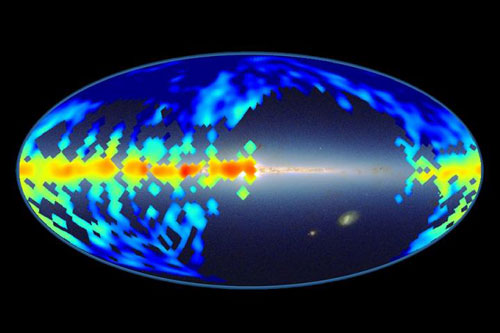 By analyzing the light of hundreds of thousands of celestial objects, astronomers from the Sloan Digital Sky Survey (SDSS) have created a unique map of enigmatic molecules in our galaxy that are responsible for puzzling features in the light from stars.
By analyzing the light of hundreds of thousands of celestial objects, astronomers from the Sloan Digital Sky Survey (SDSS) have created a unique map of enigmatic molecules in our galaxy that are responsible for puzzling features in the light from stars.
Jan 9th, 2015
Read more
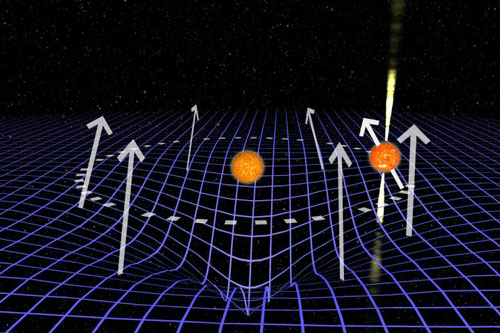 In an interstellar race against time, astronomers have measured the space-time warp in the gravity of a binary star and determined the mass of a neutron star - just before it vanished from view.
In an interstellar race against time, astronomers have measured the space-time warp in the gravity of a binary star and determined the mass of a neutron star - just before it vanished from view.
Jan 8th, 2015
Read more
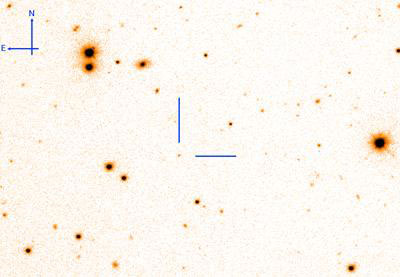 An international consortium has published in a single article a compendium of data obtained after the simultaneous research of three supernovas and of their corresponding Gamma-Ray Bursts (GRB). The research enabled contrasting statistically that the supernovas associated with GRB emit greater quantities of nickel compared to those not linked to GRB.
An international consortium has published in a single article a compendium of data obtained after the simultaneous research of three supernovas and of their corresponding Gamma-Ray Bursts (GRB). The research enabled contrasting statistically that the supernovas associated with GRB emit greater quantities of nickel compared to those not linked to GRB.
Jan 8th, 2015
Read more
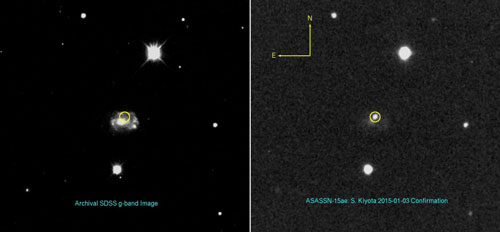 While many astronomical collaborations use powerful telescopes to target individual objects in the distant universe, a new project at is doing something radically different: using small telescopes to study a growing portion of the nearby universe all at once.
While many astronomical collaborations use powerful telescopes to target individual objects in the distant universe, a new project at is doing something radically different: using small telescopes to study a growing portion of the nearby universe all at once.
Jan 8th, 2015
Read more
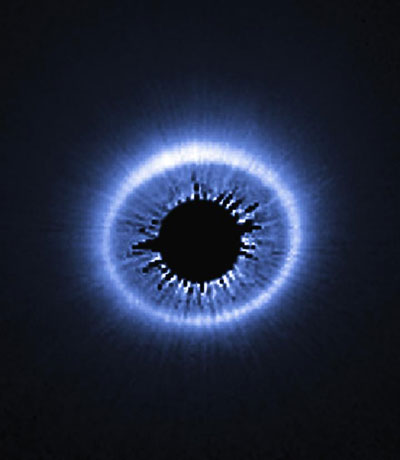 A NASA-sponsored website designed to crowdsource analysis of data from the agency's Wide-field Infrared Survey Explorer (WISE) mission has reached an impressive milestone. In less than a year, citizen scientists using DiskDetective.org have logged 1 million classifications of potential debris disks and disks surrounding young stellar objects (YSO). This data will help provide a crucial set of targets for future planet-hunting missions.
A NASA-sponsored website designed to crowdsource analysis of data from the agency's Wide-field Infrared Survey Explorer (WISE) mission has reached an impressive milestone. In less than a year, citizen scientists using DiskDetective.org have logged 1 million classifications of potential debris disks and disks surrounding young stellar objects (YSO). This data will help provide a crucial set of targets for future planet-hunting missions.
Jan 7th, 2015
Read more
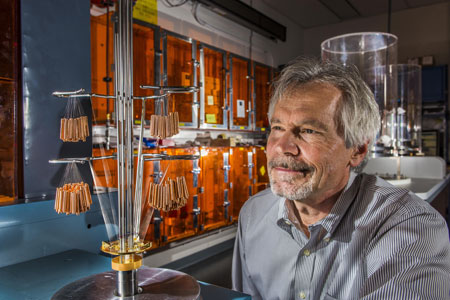 Working at temperatures matching the interior of the sun, researchers at Sandia National Laboratories' Z machine have been able to determine experimentally, for the first time, iron's role in inhibiting energy transmission from the center of the sun to near the edge of its radiative band - the section of the solar interior between the sun's core and outer convection zone.
Working at temperatures matching the interior of the sun, researchers at Sandia National Laboratories' Z machine have been able to determine experimentally, for the first time, iron's role in inhibiting energy transmission from the center of the sun to near the edge of its radiative band - the section of the solar interior between the sun's core and outer convection zone.
Jan 6th, 2015
Read more
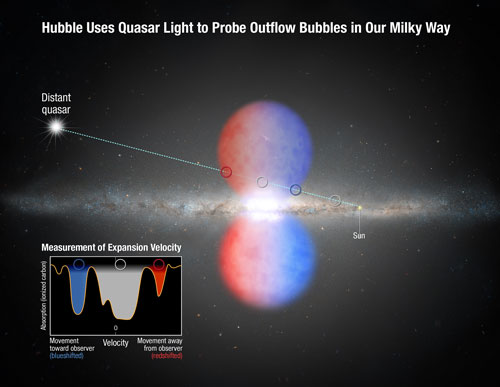 At a time when our earliest human ancestors had recently mastered walking upright, the heart of our Milky Way galaxy underwent a titanic eruption, driving gases and other material outward at 2 million miles per hour. Now, at least 2 million years later, astronomers are witnessing the aftermath of the explosion: billowing clouds of gas towering about 30,000 light-years above and below the plane of our galaxy.
At a time when our earliest human ancestors had recently mastered walking upright, the heart of our Milky Way galaxy underwent a titanic eruption, driving gases and other material outward at 2 million miles per hour. Now, at least 2 million years later, astronomers are witnessing the aftermath of the explosion: billowing clouds of gas towering about 30,000 light-years above and below the plane of our galaxy.
Jan 6th, 2015
Read more
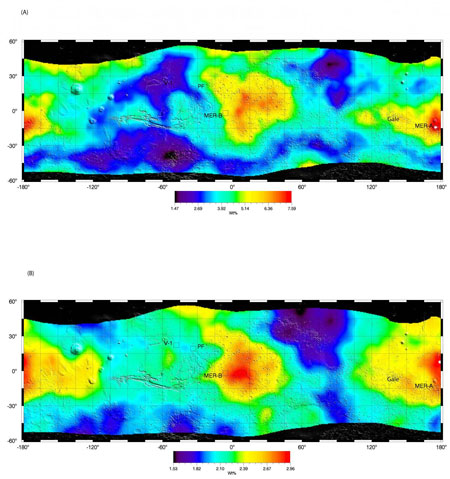 New research reveals a spatial association between the presence of sulfur and hydrogen found in martian soil. The work may in turn identify hydrous iron sulfates as key carriers of H2O in bulk martian soil.
New research reveals a spatial association between the presence of sulfur and hydrogen found in martian soil. The work may in turn identify hydrous iron sulfates as key carriers of H2O in bulk martian soil.
Jan 5th, 2015
Read more
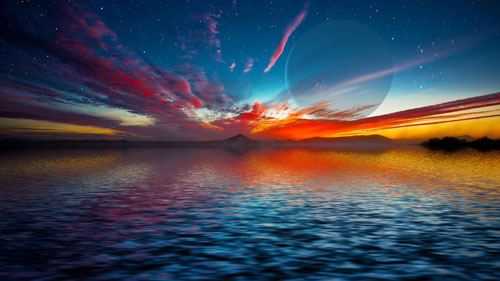 For life as we know it to develop on other planets, those planets would need liquid water, or oceans. Geologic evidence suggests that Earth's oceans have existed for nearly the entire history of our world. But would that be true of other planets, particularly super-Earths? New research suggests the answer is yes and that oceans on super-Earths, once established, can last for billions of years.
For life as we know it to develop on other planets, those planets would need liquid water, or oceans. Geologic evidence suggests that Earth's oceans have existed for nearly the entire history of our world. But would that be true of other planets, particularly super-Earths? New research suggests the answer is yes and that oceans on super-Earths, once established, can last for billions of years.
Jan 5th, 2015
Read more
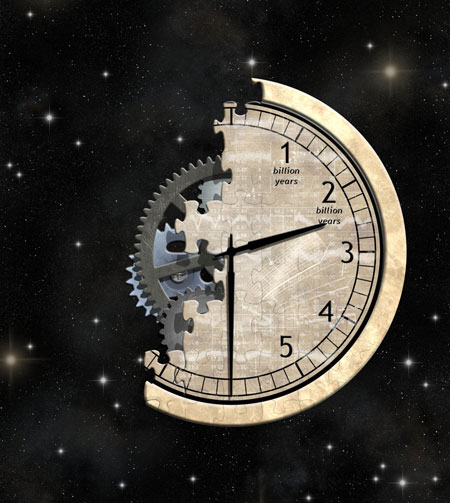 When you're a kid every birthday is cause for celebration, but as you get older they become a little less exciting. You might not want to admit just how old you are. And you might notice yourself slowing down over the years. You're not alone - the same is true of stars. They slow down as they age, and their ages are well-kept secrets. Astronomers are taking advantage of the first fact to tackle the second and tease out stellar ages.
When you're a kid every birthday is cause for celebration, but as you get older they become a little less exciting. You might not want to admit just how old you are. And you might notice yourself slowing down over the years. You're not alone - the same is true of stars. They slow down as they age, and their ages are well-kept secrets. Astronomers are taking advantage of the first fact to tackle the second and tease out stellar ages.
Jan 5th, 2015
Read more
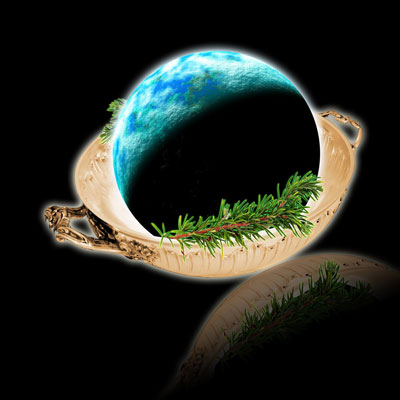 How do you make an Earth-like planet? The 'test kitchen' of Earth has given us a detailed recipe, but it wasn't clear whether other planetary systems would follow the same formula. Now, astronomers have found evidence that the recipe for Earth also applies to terrestrial exoplanets orbiting distant stars.
How do you make an Earth-like planet? The 'test kitchen' of Earth has given us a detailed recipe, but it wasn't clear whether other planetary systems would follow the same formula. Now, astronomers have found evidence that the recipe for Earth also applies to terrestrial exoplanets orbiting distant stars.
Jan 5th, 2015
Read more
 The catalogues of celestial objects contain a galaxy cluster called 'Abell 4067'. Recent observations with the XMM-Newton space observatory, however, reveal evidence that this object actually constitutes of the merger of two clusters. The smaller system appears to be losing the greater part of its gas.
The catalogues of celestial objects contain a galaxy cluster called 'Abell 4067'. Recent observations with the XMM-Newton space observatory, however, reveal evidence that this object actually constitutes of the merger of two clusters. The smaller system appears to be losing the greater part of its gas.
 Subscribe to our Space Exploration News feed
Subscribe to our Space Exploration News feed













